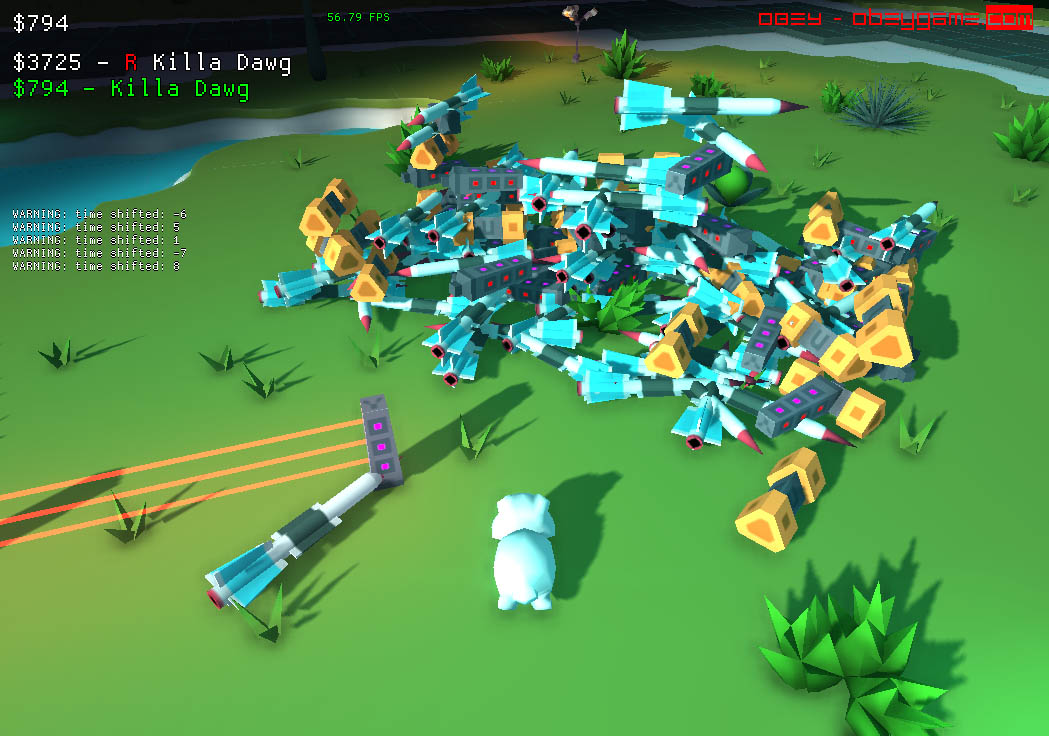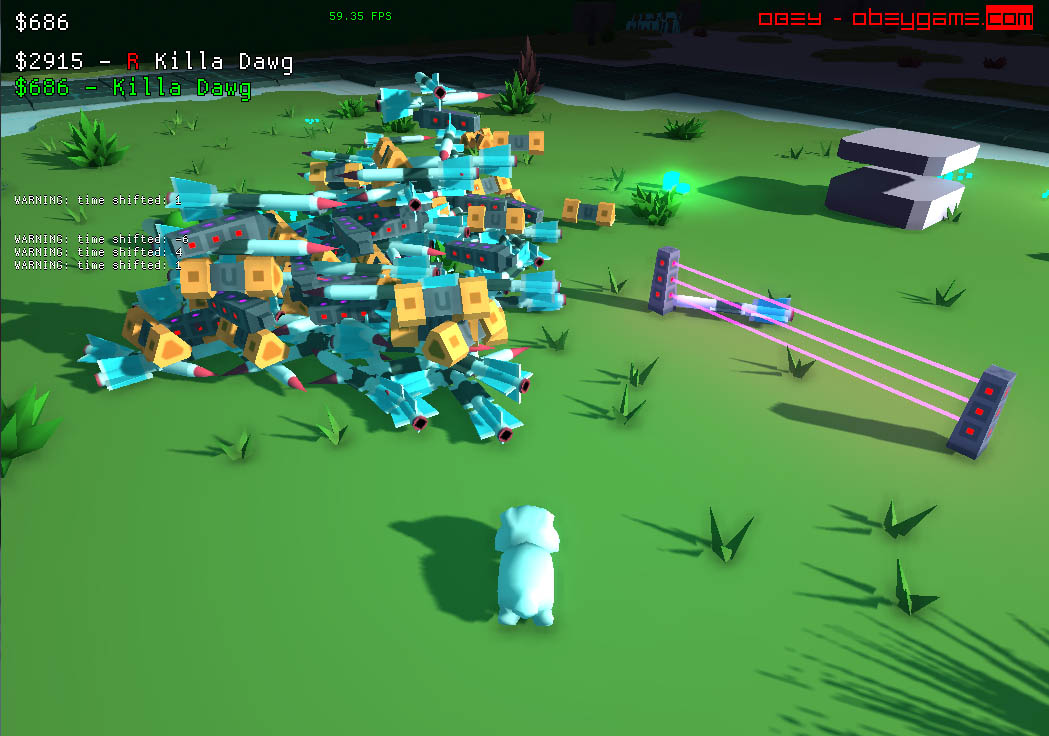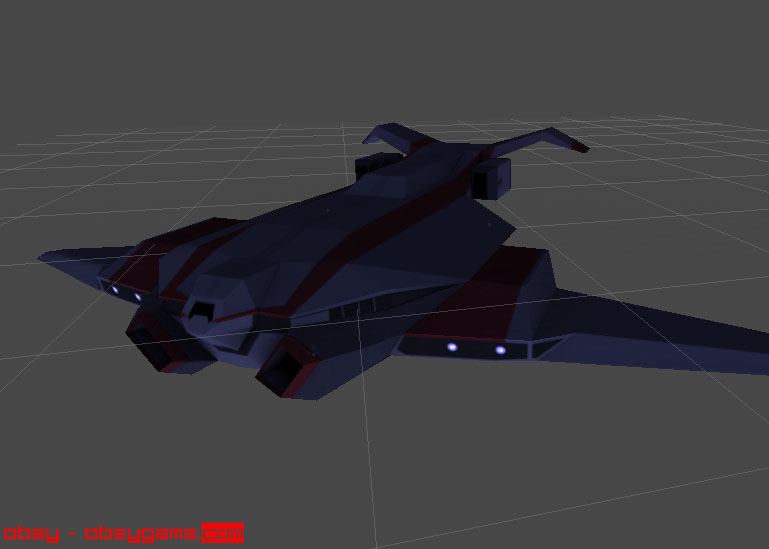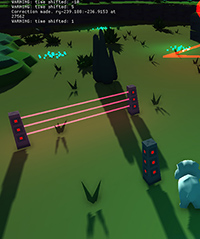3 days until kickstarter launch! 😀
GAU Studios Interview
The peeps at GAU Studios were so very kind, and interviewed me at BostonFIG! Here it is! 😀
Was awesome having you guys play!
Flamez!!!
I’ve been quiet, but I have been working very hard preparing OBEY to go into kickstarter mode! 🙂
As you can see I have implemented a flamethrower.
It’s main purpose was to have a way to counter players that like to camp the door before subverting. The strategy is to wait by the door until the robo player has bought a dropship, bought some goodies, or killed off the other nearby players before subverting! It’s a great strategy, but it should have a counter in the game. That is the flamethrower. The flamethrower can be aimed down to the door and will easily incinerate anyone camping there. The drawback to the flamethrower is that it leaves charred corpses when it kills bunnies. Charred corpses are dangerous to robo because other bunnies can smuggle them to robo’s loading area and drop them in, causing the robo player to incur a large $ penalty. The robo player can destroy the corpses though by shooting them.
I think the current build is a good build to use as showcase to the press. So it is time to ramp up for kickstarter mode! 😀
OBEY gameplay brief
Public reactions…
On last Saturday I showed OBEY off at Boston Festival of Indie Games. I brought 5 computers and set up a LAN so people can play the game.
The response was overwhelming. And it gave me hope that I can pull off a kickstarter to finish this project.
A bunch of people told me it was their favorite game in the whole show, including some press guys. All 5 computers were filled practically the entire time with people playing and trying out the game. About 50 people signed up for our kickstarter emailing list and a bunch of people left and came back later to play again after seeing the rest of the show. Some were absolutely glued to the game.
For the most part, people played the game using the ‘king of the hill’ strategy (basically shooting everything that moves)… except for 1 or 2 groups of players that kept playing for over 1 hour: after a while they started coercing each other. This is pretty much what I expected to happen, so it also gives me hope that the design is taking shape, too.

no that is not a phone number on my hand. It is the true mark of a computer nerd: an IP address. (and worse, no I wasn’t waving it on purpose.)
Fast forward to Monday where I showed OBEY at Boston Indies Demo Night at MIT to other local Boston devs and indies (after some minor bug fixes that were exposed during BostonFIG).
Again, I was glad to see people drawn to the game, and I had a lot of players considering there were maybe only 40 people in attendance, and some of them seemed to be having fun for long periods of time. But my best takeaway was some great and very specific feedback from people who know games and know design.
A very special thank you to Clever Endeavour Games for taking the above picture and for featuring me in their article!
Approaching OBEY’s first public demo
So last night I held another serious private playtest. This time with 4 players.
Several new items were introduced:
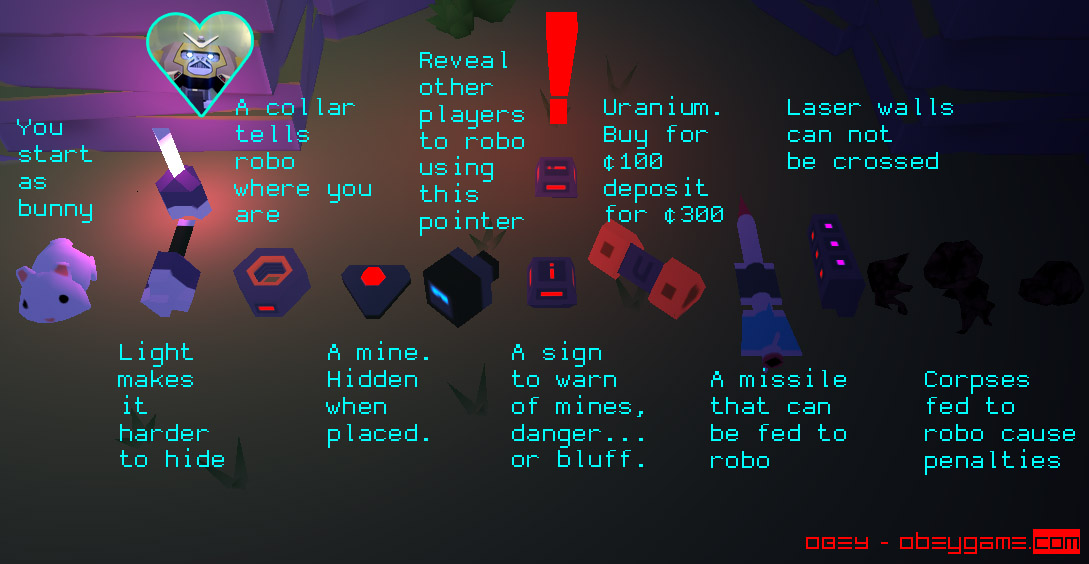
The results left me with several fixes to do of course, but most importantly: none of them scary. The desired gameplay emerged for large time periods (maybe up to 40 mins) but was not yet dominant. At several points I was being coerced to basically give points (uranium) to an opponent, until I could find a time to toss my collar and get away. Hopefully this means I can slow down adding features and begin to shift my energies towards balancing.
I am most happy with the changes caused by the addition of the ‘collar’ item.
All collars in the map can be easily seen by robo.
Having the collars really changed the dynamic of the game and pushed it into coercion territory. Players in robo consistently used them as designed, ordering “put them on or die” to make subjects trackable and hence submissive. Yet, allowing bunnies to drop the collar like any other item left just enough ‘out’ to allow bunny players to find narrow opportunities to escape (and I was able to do this myself multiple times).
The pointer unfortunately was not used much. I think I have to make it more practical and beneficial to use. It could be because of the map though: the test map had an outcrop between robo and the drop area so it was hard to point out players that were near robo from where most of the pointers were.
Sentries were also introduced:
The sentries flip on as soon as robo changes hands to fry any players that might have been tailing the new robo player or camping robo’s door. The sentries were supposed to cause players to think twice before going straight for robo’s door if they saw another bunny vying to get in at the same time (ie if they weren’t sure they could make it first, they would have to make a decision whether to wait it out or risk almost certain death). In the playtest however, it almost always just caused a game of chicken where both players just rushed for robo anyway, with the second player getting fried. It worked well though, and I don’t think I will change it since it gives new robo players 30 seconds (while the sentries are active) to consolidate their situation before competition for robo begins again.
Overall I felt the addition of the new items was a success. I am feeling encouraged that the gameplay can be balanced to fully be what I am trying to make it. However, my goal for right now is to get OBEY to a point where the coercion mechanic can simply be exhibited at BostonFIG, where the FIRST public play test of OBEY will be held in one week 🙂
Want to be part of it? Drop by the booth with your friends!
Posters
I’m getting ready to show the game at Boston Festival of Indie Games on Sept 13. I made these posters last night to decorate our booth! If you are going, def come to the booth, I will have a small LAN set up so you can play the game. 🙂
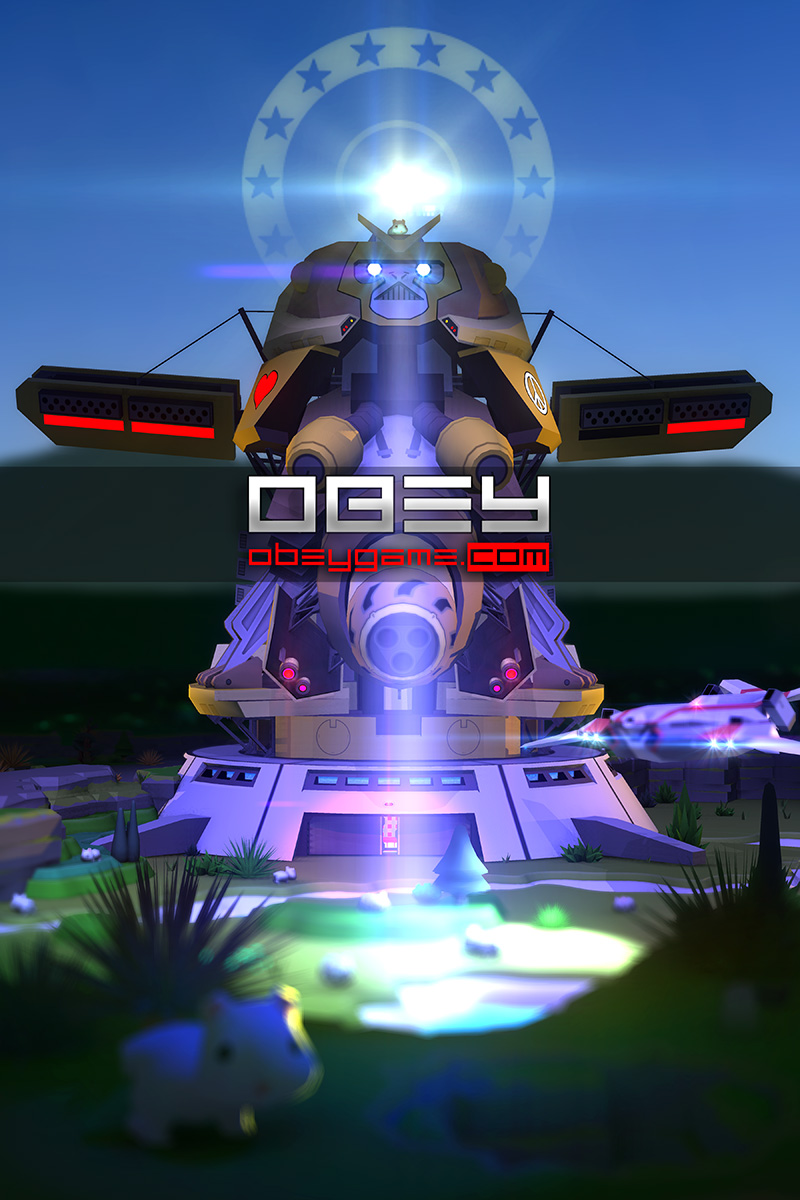
OBEY game poster

OBEY game banner
Inventory!
Let’s talk about gameplay
When I tell people that OBEY is a game about coercing other human players into doing what you want, more often than not they respond with a question, something like:
“That’s nice, but how does THAT work?!”
(AKA why would any opponent do what I want in a game?)
It’s a very good question because far as I know, this feature is unique to OBEY. The only similar examples I can think of is the gameplay in the CS Jailbreak mod, or maybe some scenarios I have seen/read/heard about in DayZ where players sometimes coerce each other for fun. Even though coercive play is a centerpiece of the Jailbreak mod, in my opinion it is such an unbalanced and primitive experience to play the mod that I hesitate to count it as a full-on “game”. And in DayZ, the ability to allow players to coerce each other seems intentional, but occurs mainly as the side effect of two factors: 1) that dying matters, and 2) players are given enough freedom that they can make up their own sub-games. Hence, to my knowledge, OBEY is the first video game to embrace and (attempt to) balance opponent coercion (players’ own, pro-active violation of their own self interest) as it’s central gameplay theme… Well, it is inspired by authoritarian systems of influence, after all.
So here is how it works in OBEY:
To win in OBEY, you must have the most ¢ at the end of the round.
Players gain ¢ (points) automatically over time. Any player controlling the robot (we’ll call that player ‘robo’) gets 10x the ¢ per second than players outside (‘bunnies’). You take control of the robot by going into a door at the base of his platform.
The gameplay fluctuates between two different states. The first, ‘superficial’ state, is how the game is played naturally by anyone who first plays it. It is essentially ‘king-of-the-hill’. The bunnies try to reach robo, and robo tries to spot them and kill them so he can keep control of it. It isn’t terribly hard for bunnies to reach the robot (it depends on the map, but they probably have about 40% chance of success). If there are many bunnies, in all probability the robo’s control won’t last long. When a bunny reaches the robot he takes control, and robo and all other bunnies are respawned, to try again.
The game can be played like this, but there are different items robo can buy with his ¢. If robo is to buy anything, he must first buy a ‘drop ship’. Once purchased, killed players do not respawn in the map, but instead respawn inside the drop ship. The drop ship comes intermittently into the map and drops off the respawned bunnies. The function of this is to allow robo to penalize killed players with a spawn time. When they die, they spawn in the ‘purgatory’ that is the drop ship, and score half of their already paltry earnings while inside. The other problem for players if they die (and a drop ship exists) is that they will be dropped off right in front of robo where robo will know exactly where they are when they come into play. So dying is no benefit at all except for lost money and time. You might ask why then wouldn’t robo just kill bunnies again as soon as they get dropped off (constant spawn kill). The reason is because there does exist a way for bunnies to destroy the drop ship if they are inside of it, and if this happens the game will again revert to the ‘superficial’ mode (and this is disadvantageous to robo). Hence, a good robo player will want bunnies controlled, not dead. Therefore bunnies always have a viable choice to obey vs disobey when robo asks them to do things that are against their best interest, and robo has a viable choice to kill or not kill.
For example, let’s say you are robo. Among the things you can buy are a laser wall :
To use them you must coerce a bunny to place them for you. Placed properly, the walls will make it much more difficult to subvert you. However, if you get subverted, the drop ship and anything else you may have bought is inherited by that player. Hence a bunny may comply with the mind that they are simply building it for themselves!
Of course, they might not succeed at subverting you… in which case I guess they were acting against their own interest, after all.















